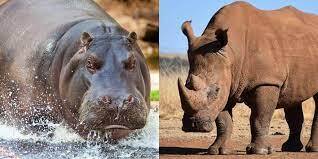Skin is the outer layer of a body that protects the organs of a living being. But some animals got thick layers of skin. You may already get ideas about some of these animals.
Animals with thick skin do have some advantages for their feature. You must be wondering what animal has the thickest skin? And what privilege the animals with tough skin may get!
So, today I’ll share detailed information about the top 10 animals with the toughest skin. Let’s jump into the article and expand your knowledge about animals with really tough skin to survive in the wild.
Top 10 Animals With Thick Skin
1. Whale Shark
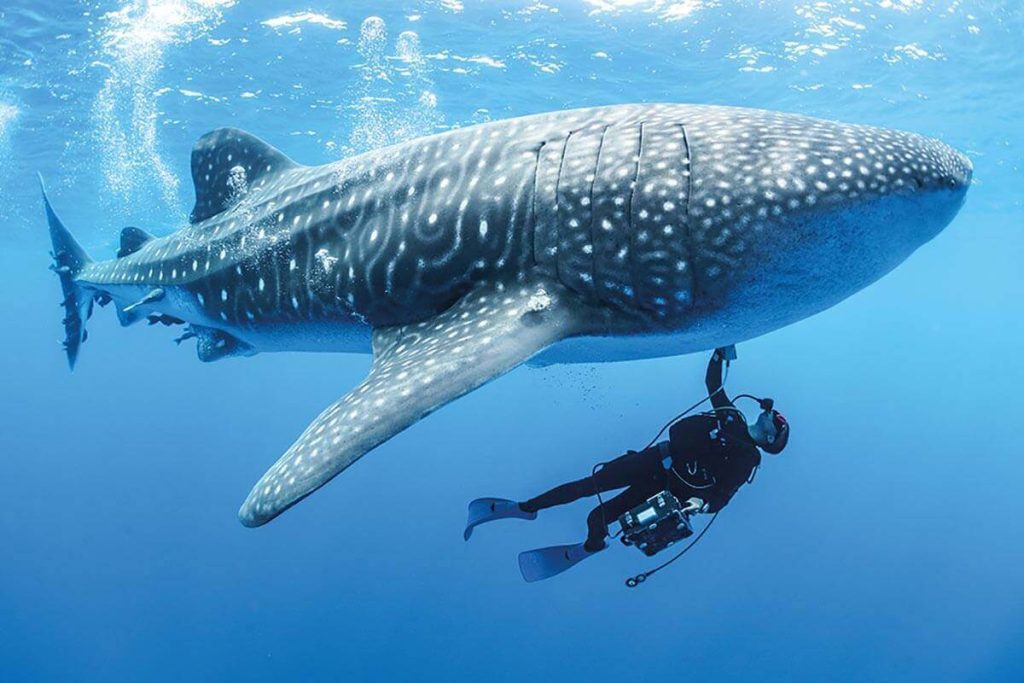
The Whale shark is considered the largest animal in the ocean. It has got an exceptional feature with its four inches thick skin. The thickness of its skin provides them with some privileges.
- Whale shark is the inhabitants of the deep tropical ocean, and they do not settle in one place. Their distinctive skin feature helps them to get used to a new environment.
- Their extremely thick skin makes it difficult for their predators to attack. The thick skin all over its body makes it impossible for parasites to get attached to it.
- They can regulate their body temperature according to their need. So, even in extremely cold winter weather, they can keep their body warm and in warmer environments, their skin surface allows them to release excessive heat through the skin.
- Whale skin helps them dive and bounce effortlessly at the water’s surface.
- Whale skin plays a significant role as a sensory organ. It also allows them to do better social interaction and mating behaviour.
2. Elephant
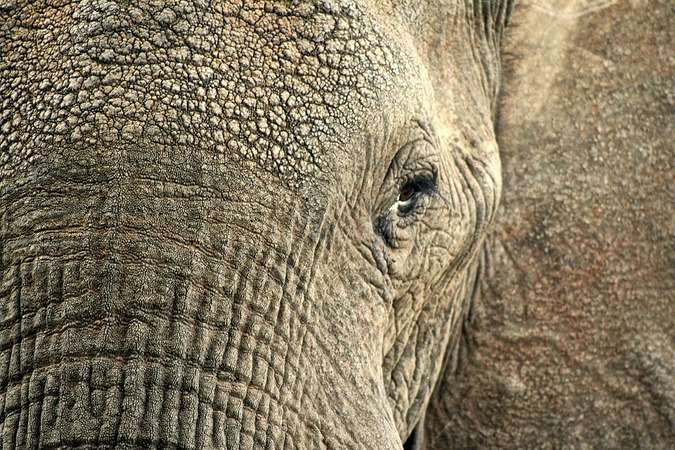
Elephants have got almost one inch thick skin. It covers with a thin layer of hair all over its body.
They have wrinkles all over their boby and can store water in the pouches of their skin. It helps to keep their body cool in the extremely hot temperature.
- The skin of elephants can be up to 2 inches (5 centimetres) thick, making it one of the thickest among land animals. This thickness offers protection from severe injuries from sharp branches or hard rocks in the wild.
- Elephants love to take mud baths. As they are sensitive to insect bites, the mud baths protect them against parasites and insects like lice and ticks.
- Like most other hairless mammals, elephants have a high chance of sunburn. Mud baths are a natural substance to get protection from the harsh sunlight.
3. What Animal Has the Thickest Skin?- Crocodile
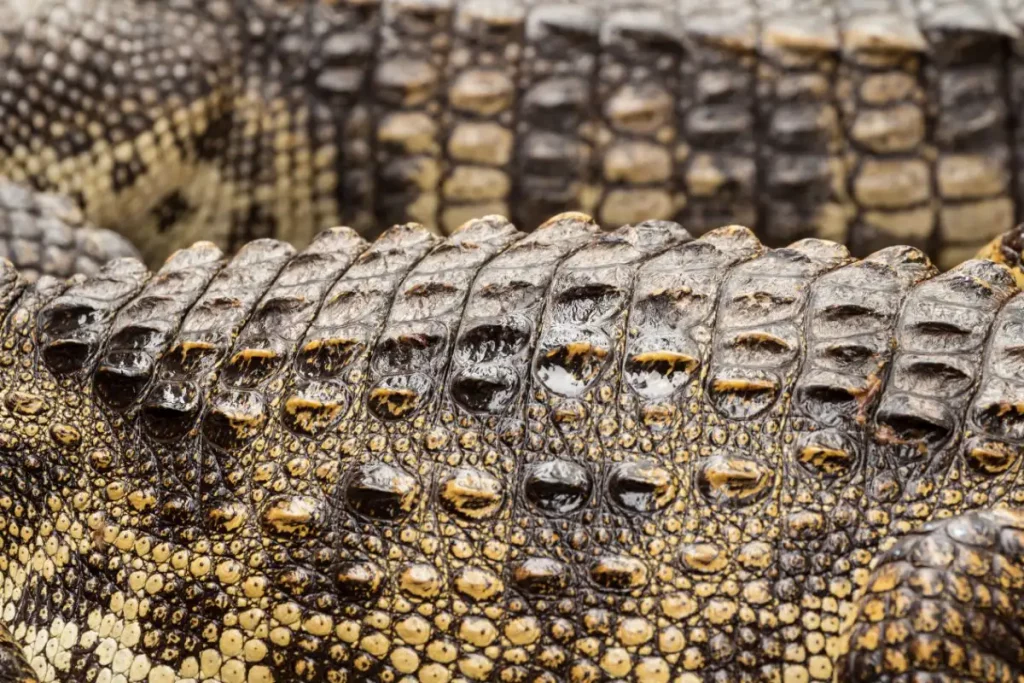
There is no doubt that crocodiles have got the toughest skin. Crocodile skin is covered with bony plates named osteoderms.
These scales act as natural armor, protecting the crocodile from physical injuries and saving them from the attack of rivals. It also works as a defensive layer and protects the vital organs of the body.
Scutes are the bony structures on a crocodile’s body formed with solid material named Keratin. Keratin is the common ingredient of horns in animals’ bodies.
- The hard surface of Crocodile’s skin makes it difficult for predators to penetrate their skin and do harm. Even large predators with sharp nails, like lions or hyenas, find it difficult to get through a crocodile’s sharp spines. Its scale is so tough that it can even stop a bullet. It is likely a bulletproof jacket for them.
- The skin consists of a good amount of oils and glands, which prevents water loss from its body through evaporation. So, it helps to maintain the moisture of the skin.
- Crocodile’s skin consists of antibacterial properties. Crocodiles’ bony, scaly exterior helps protect against bacterial infections, even in the often bacteria-rich unhygienic water or decomposing carcasses.
4. Honey Badger
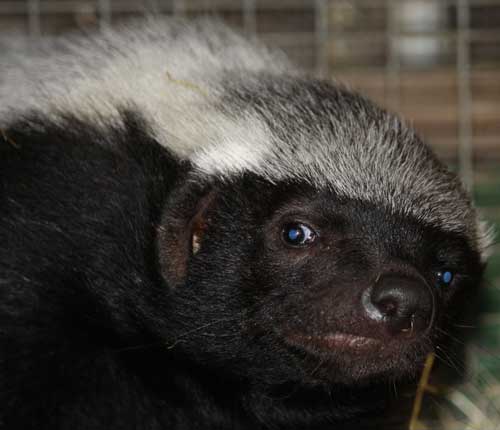
Honey Badger is a small mammal compared to others with tough skin. Its body is covered with black fur in its entire body and silver patches visible from its head to back. They have sharp teeth and claws, which help to boost their fighting abilities.
- The honey badger’s skin is quite loose and stretchable. This feature helps it escape predators’ jaws, such as larger carnivores or snakes.
- Their skin is also tough enough to defend against insect stings.
- The tough skin of the honey badger provides it with a natural shield against the predator’s aggression. Honey badgers can use their thick skin as armour when they sense any threat. It allows them to resist attacks from predators or rivals during territorial disputes.
- The honey badgers’ skin helps them to survive in distinct environmental conditions. The thick skin provides insulation and prevents excessive heat loss or gain. It supports maintaining the perfect body temperature.
5. Rhino
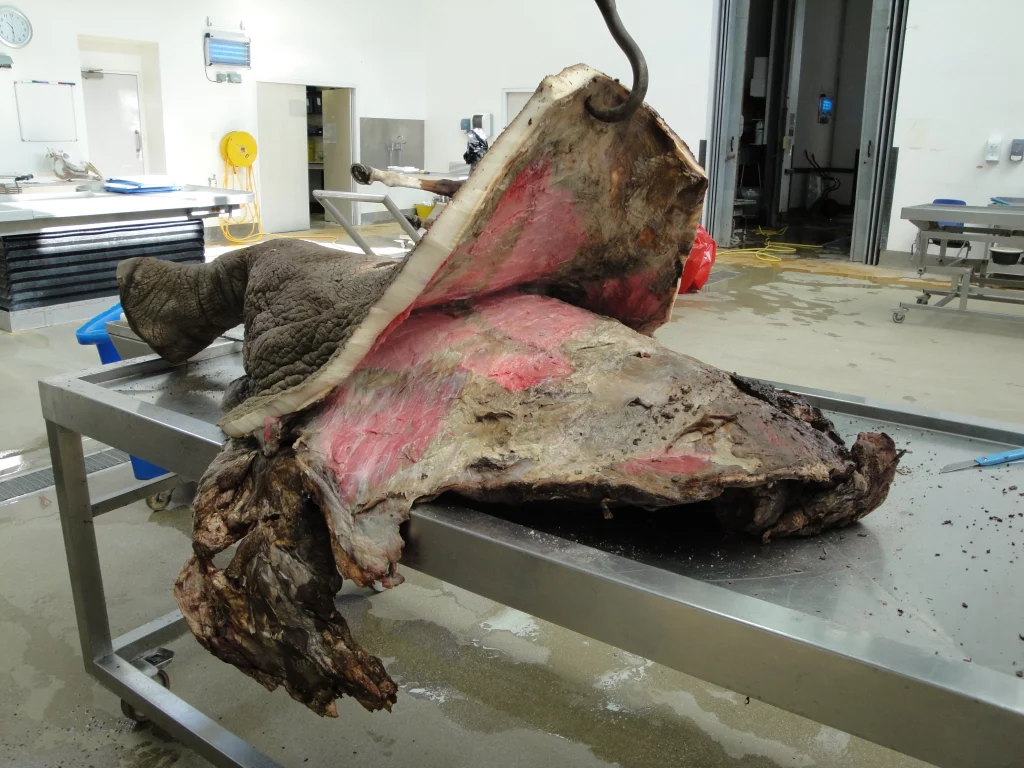
You must be surprised to know that Rhino’s skin feature resembles the elephant’s. Their skin is also two inches thick, as well as elephants. They also have similar traits of rolling in the mud. It gives protection against sunburn and insects, Their skin is silver brown in colour.
- Rhinos, including white rhinoceros, have thick, tough skin that protects them against external threats. The skin consists of multiple layers of collagen fibres. Their thick hide makes them highly resistant to cuts, scratches and punctures from thorns, rocks, or the teeth and claws of predators.
- The thick skin of the rhinoceros offers protection from the harsh ultraviolet (UV) radiation from the sun. It works as a shield for the rhinoceros. It also reduces the chance of skin damage from sun exposure.
- Rhinos used to live in diverse environments. Their skin is well-adapted in all types of environments. The folds and plates on their skin allow them to shed water and mud that prevents the skin from becoming waterlogged or overly dirty. This skin feature mark as beneficial to their skin and help to prevent any bacterial infection.
6. Sperm Whale
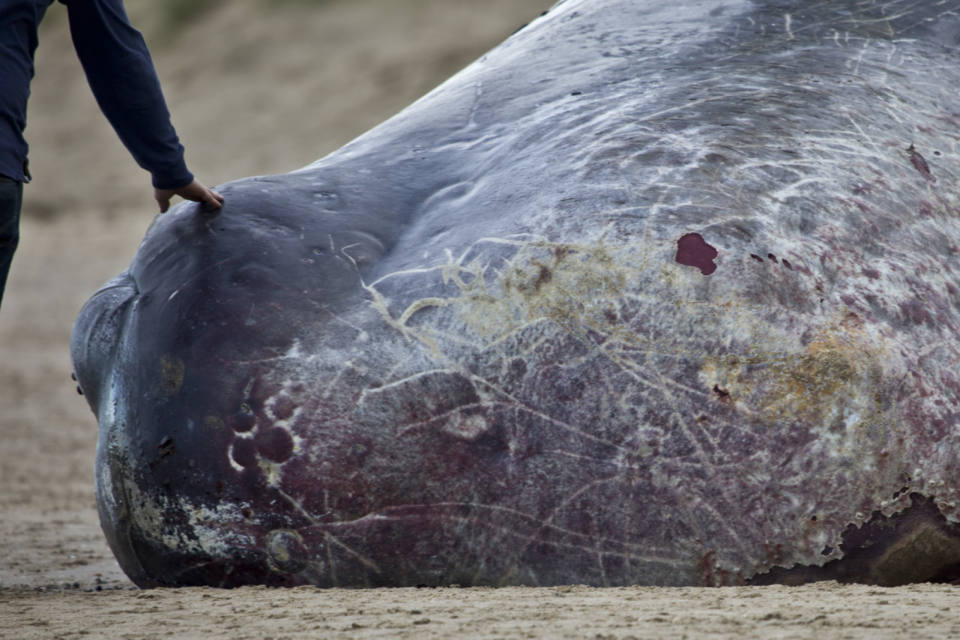
A sperm whale is considered as the largest mammal. An adult sperm whale measuring up to 52 feet long. It has a thick layer of skin on its head to tail.
- Sperm whales dive into the deep see. Their thick skin helps them endure the immense pressure in the deep ocean. The skin works as a protective barrier against the crushing force of the water. It prevents damage to the underlying tissues and organs during deep dives.
- The thick layer of skin protects them from a sudden attack by predators. When they smell any risk, they turn their strong back which becomes a shield for them.
7. Hippopotamus
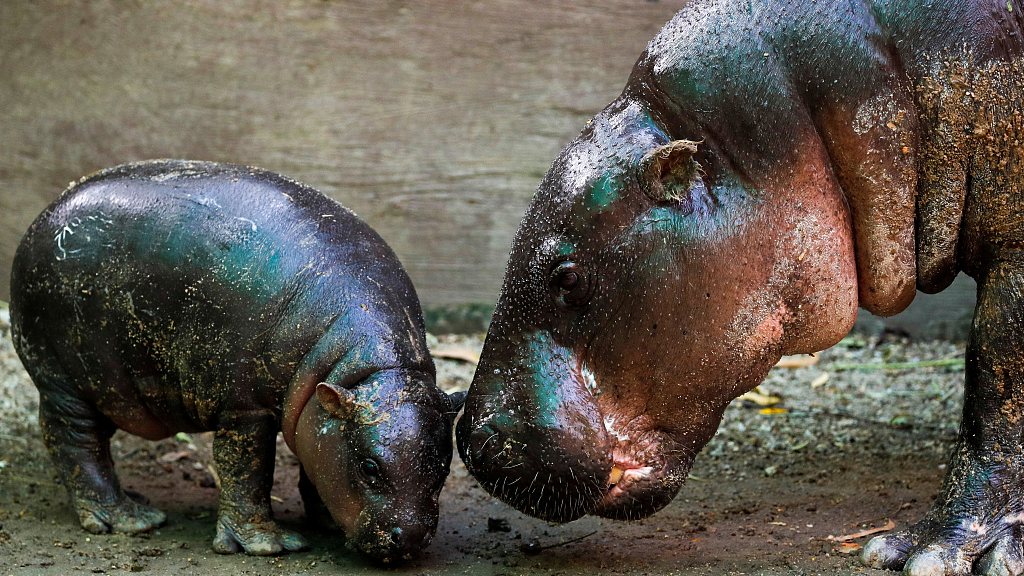
Hippopotamus is a thick-skinned mammal. It has remarkably tough skin, about 6cm or 2cm. Its thick hide serves to protect them from predators like crocodiles or hyenas.
- Hippos use their huge body and skin as a barrier when they smell a chance of getting attacked. The thickness of their skin makes it difficult for predators to cause any fatal injury, especially when hippos are knee-deep into the water.
- Their skin consists of natural sunscreen substances. Though their skin is very thick, it is sensitive to prolonged sun exposure. For this reason, they try to keep it cool by rolling over water or mud. The pink ooze that is released from its skin protects them from sunburn.
8. Camel
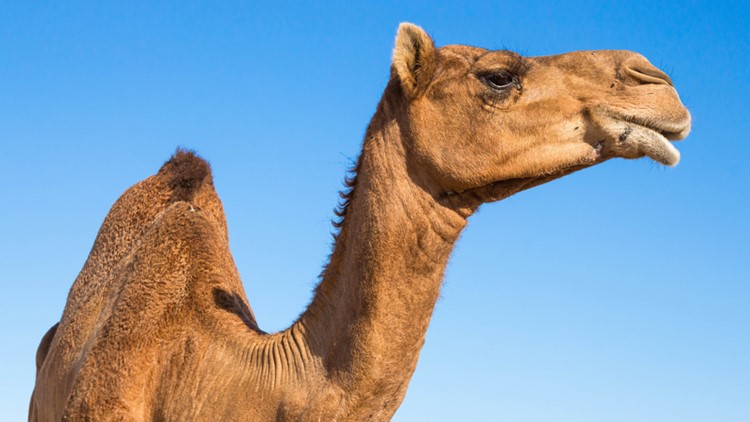
Camel are habitats of the desert where it is extremely hot weather. As they live in the desert, their skin is thick enough to protect their organs from the harsh environment.
- Camels can conserve water for adverse conditions in the desert. Their thick skin plays a role in this. Their osmotic cells allow them to store water in extremely hot weather. The outer layer of their skin prevents moisture loss. It reduces evaporation and helps the camel retain water in its body for longer.
- Camels have a subcutaneous fat layer beneath their skin, which acts as insulation. This fat layer helps to regulate the camel’s body temperature. It keeps their body cooler during the hot summer days and warmer during cold desert nights. Their extra thick layer of skin in their chest and knees allow them to sit in the hot sand without feeling any burning sensation.
9. Armadillo
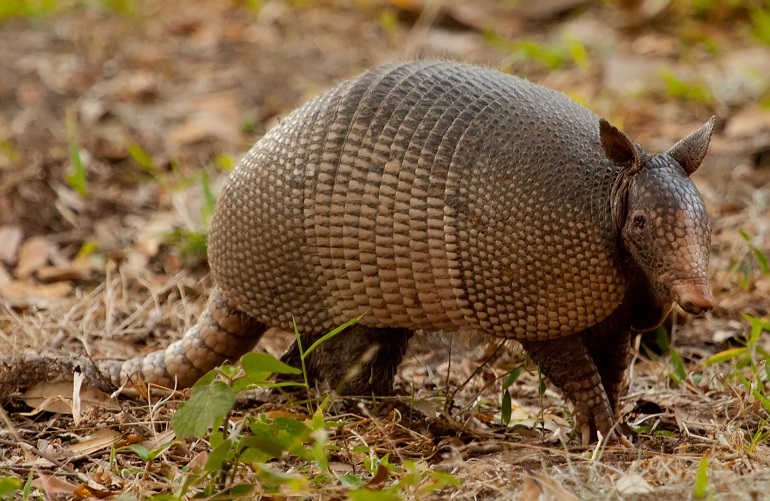
Armadillo has a unique skin feature. Its light grey carapace made of bony plates that cover its head and back. These plates save them from any potential threats.
- The armoured skin of armadillos acts as protects them against predators. The extra thick layer of their skin prevents to get them injured by the attack of their rivals.
- The bony plates can resist sharp teeth, claws, and crushing forces which can provide a strong barrier against potential attackers.
10. Bison

A Bison is a furry animal with a huge hump on its back. It is fully covered with long hair.
- Their thick skin layer protects them from harsh weather conditions, especially in winter.
- The dense layer of hair and fat beneath the skin acts as insulation and helps them to keep warmer in the cold weather. Their tough skin defends them from sudden attacks from predators.
I hope you find my article informative and you have already understood that thick hide is a plus for animals to survive in adverse conditions. They use their tough skin as a shield and help to adapt to diverse environmental conditions.
FAQ
Which animal has the strongest skin?
Crocodile has the strongest skin of all. Their skin resembles a bulletproof jacket. Their skin is made of bony plates covering their body. The bony structures of their skin are even stronger than others, making it very difficult for their opponent to win against them.
Which animal has the thickest skin in the world?
The sperm whale has a 14” thick skin, making them the thickest skin in the living creature. Their head,back and tail covered with the thick skin.
What animal has the toughest scales?
Arapaima gigas has the toughest scales among the fish. It has so tough scales that even piranha cannot penatrate through it. Crocodiles have tough scale on its back among the reptiles.
What animal has the most layers of skin?
Most Animals have 3 layers of skin. The layers of the skin identified as Epidermis, Dermis and Hypodermis. But Sperm whale has the the most thickest layer of skin among the most animals.
Are Crocodiles Bulletproof?
No.Though Crocodile have thick bony structures on their body which can give their body an extra protection agaist sudden attack. But an well planned shots on their major body organ can kill them immediately.

